Hondas have been widely acclaimed for their proven superior build quality. This had made them very viable and economical candidates for used car purchases often for many more years than most competitors.
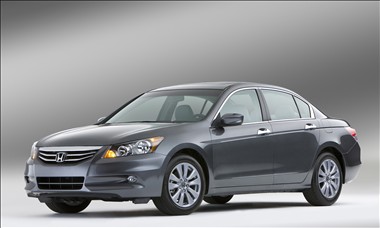
And in today's high-priced car market, many car buyers are looking for "older" vehicles (10+) that have aged well as a way of saving significant dollars. This has made the issues of reliability and dependability more crucial than ever because buying a vehicle that looks good but ends up breaking down again and again can make for an absolute financial disaster.
Older Honda Model Reliability
Older Honda vehicles have earned a reputation for reliability due to several key qualities ingrained in their design, engineering, and manufacturing.
And it should be noted that the issues listed in the Mechanical Problem Watchlists below are not widespread. But they did occur from time to time and should be checked for before buying.
Engine Durability: Honda's engines are often praised for their longevity. The brand is known for its efficient and robust engine designs that, when properly maintained, can endure high mileage without significant issues. Regular oil changes and basic maintenance play a crucial role in extending engine life.
Solid Build Quality: Hondas from previous decades were typically well-built and engineered with quality materials. This contributes to their durability and ability to withstand wear and tear over time.
Simple and Effective Technology: Honda has a history of employing straightforward yet effective technology in their vehicles. This simplicity often translates to fewer electronic components prone to failure and easier repairs when issues arise.
Ease of Maintenance: Many older Honda models have components that are relatively easy and affordable to maintain or replace. Their popularity and widespread availability mean that aftermarket parts are commonly available, reducing repair costs.
Consistent Performance: Hondas are known for delivering consistent and reliable performance, whether it's in terms of fuel efficiency, handling, or overall driving experience. This reliability often contributes to their long-term appeal.
And as for their expected lifespan, older Hondas, when properly cared for, can often exceed 200,000 miles or more. Some enthusiasts and careful owners have reported reaching 300,000 miles and more with routine maintenance. However, this heavily depends on how well the vehicle has been maintained throughout its life, driving conditions, and other factors.
Regular maintenance, including timely oil changes, fluid checks, brake inspections, and addressing any issues as they arise, significantly impacts the longevity of an older Honda.
Some Popular Older Hondas
Honda Accord: Few vehicles have earned the type of acclaim the Accord can boast over the last three decades. And its secret is simple: it's comfortable, roomy, easy to drive, fuel efficient, durable and emphasizes safety. The truth is, it's what most people are looking for in a car, whether coupe or sedan.
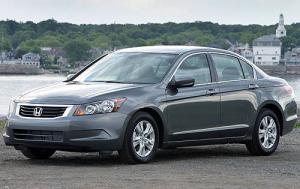
The eighth-generation Accord was produced beginning in 2008 through the 2012 model year. Compared to its predecessor, this generation was slightly larger in size and its engine power was also increased ... but without actually reducing its fuel economy. These Accords have been produced in both midsize coupe and sedan body styles and with a number of model variations to meet different buyer needs.
The base engine on these models is a 2.4-liter four-cylinder that generates 177-horsepower. There's also an enhanced version of this engine available on the EX model that produces 190-horsepower. And for those looking for more power, the 3.5-liter V6 pumps out a still more robust 271-horses.
The seventh-generation, produced for 2003 - 2007, can still readily be found in the used market. They were equipped with either a 2.4-liter 160-horsepower incline-4 engine or a 3.0-liter 240-horsepower V6. They can also be found with either a 5-speed manual transmission or 5-speed automatic, while a 6-speed manual was available on the V6 EX coupe.
Overall Accord Pros: High resale values, spacious passenger room, higher-quality interior, fairly responsive steering, sporty coupe available.
Overall Accord Cons: Above average interior road and wind noise, not everyone finds the seats comfortable, too many center stack buttons.
Older Honda Accord Mechanical Problem Watchlist
The seventh-generation (2003–2007) and eighth-generation (2008–2012) Honda Accords are generally well-regarded vehicles known for their reliability. However, there were a few reported mechanical issues and concerns that some owners experienced with these models:
Seventh Generation (2003–2007) Honda Accord:
Transmission Problems: This generation of Accords had some reported issues with the automatic transmission, particularly in V6 models. Complaints included premature wear, slipping, harsh shifting, or failure. Honda addressed some of these concerns with extended warranties or recalls for certain transmission components.
Brake Wear: Some owners reported premature brake wear or issues with brake pads and rotors that required more frequent replacements than expected.
Starter Problems: There were occasional complaints about starter motor failure or issues with starting the vehicle, though these were not widespread.
Airbag Recalls: Like many vehicles from various manufacturers during this time, there were recalls related to airbag inflators in certain Honda Accord models. These recalls aimed to address potential safety concerns with airbag deployment.
You May Also Like:
Easily Negotiating The Lowest Price
Do This For The Best Trade-In Price
Understanding Wholesale And Trade-in Values
Eighth Generation (2008–2012) Honda Accord:
Cylinder Misfire: Some owners reported instances of engine cylinder misfires in V6 models, often resulting in the need for repairs or replacement of components like ignition coils or spark plugs.
Power Steering Hose Issues: There were occasional complaints about power steering hose leaks in some Accords, leading to the need for replacements.
Starter Motor Problems: Similar to the seventh generation, a few owners experienced issues with starter motor failures or difficulties starting the vehicle.
Air Conditioning Problems: Some users reported problems with the air conditioning system, including issues with the compressor or leaks that required repairs.
It's important to note that while these issues were reported by some owners, they were not universally experienced across all vehicles in these generations. Honda, like other manufacturers, has often responded to reported problems by issuing recalls, technical service bulletins, or extended warranties to address specific issues.
Honda Civic: The Civic has simply been one of the most popular vehicles ever sold in the U.S. since debuting in 1972. It is a full efficient, solidly built vehicle that has set the standard for reliability in a compact car. It's simply a "can't miss" choice.
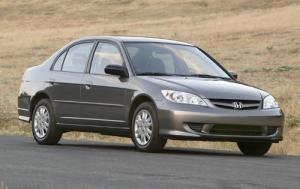
Good choices can still be found in both its seventh and eighth generations with careful shopping. The eighth-generation was produced in the 2006 model year through the 2011 model. It includes base DX, LX, EX, EX-L and Si models. There's also additional DX Value Package, LX-S, Hybrid and GX sedan models.
All models feature a wide range of safety features, including antilock brakes (ABS), front-seat side airbags and full-length side curtain airbags. The base DX model, however, is fairly sparse when it comes to features, so those looking for more typical features such as air-conditioning and power accessories will need to look at some of the higher trims.
The previous seventh-generation Civic was produced for the 2001-2005 model years. Available body styles consisted of coupe, sedan and 2-door hatchback. The available models were those typically offered by Honda: DX, LX and EX, as well as a number of specialty trims such as the VP, HX, SE and Hybrid.
Overall Civic Pros: Capable yet fuel-efficient engines, attractive and roomy cabin, solid crash test ratings, sedan or coupe availability.
Overall Civic Cons: Some find combination of digital and analog gauges odd, in newer models Bluetooth and stability control are only available on upper trims, slow Hybrid and GX acceleration.
Older Honda Civic Mechanical Problem Watchlist
Seventh Generation (2001–2005) Honda Civic:
Transmission Problems: Some automatic transmission-equipped Civics from this generation had reported issues, especially in early models. These problems included premature wear, slipping, or failure. Honda addressed some of these concerns through recalls or extended warranties for certain transmission components.
Rust Issues: In regions with harsh climates or high humidity, certain Civic models from this era were susceptible to rust, particularly around the rear wheel wells and undercarriage. Rust could potentially weaken the vehicle's structural integrity.
Airbag Recalls: Similar to other Honda models of this period, there were recalls related to airbag inflators in certain Civic models, aiming to rectify potential safety concerns with airbag deployment.
Eighth Generation (2006–2011) Honda Civic:
Cracked Engine Blocks: Some Civic models equipped with the 1.8-liter engine from this generation experienced cracked engine blocks, which led to coolant leakage. Honda acknowledged this issue and extended the warranty coverage for affected vehicles.
Starter Problems: There were occasional complaints about starter motor failure or starting issues in some Civics from this generation.
Paint Quality: Some owners reported premature paint fading or chipping, particularly in certain colors or in vehicles exposed to specific environmental conditions.
Suspension Noise: Certain Civics had reported issues with suspension components, leading to noises over bumps or rough roads. This could sometimes be attributed to worn-out struts or bushings.
Honda CR-V: One of the early entries into the compact SUV market, the CR-V has been immensely popular due to its 4-cylinder engine, carlike drive and handling, and competitive pricing. An excellent choice for on-road drivability and practicality.
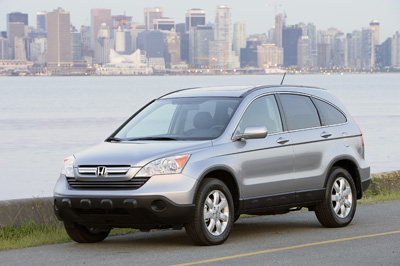
Honda redesigned the CR-V for 2007 and produced it through the 2011 model year, adding a significantly revised new look, while maintaining the four-cylinder engine and 5-passenger seating. This CR-V reduced 3 inches of length from the 2002-06 generation, but still kept the wheelbase and interior size unchanged.
To improve driving performance, it was also designed with a lower center of gravity and a wider track width. In addition, the previously externally-mounted spare tire was concealed while the gearshift lever was moved from the steering column to the central panel.
The previous generation debuted for the 2002 model year and was produced through 2006. Additional interior space was added, engine power got a boost and there were some styling updates. Cabin width was expanded by 3.6 inches, rear leg room grew 2.7 inches and an additional 5 cubic feet of cargo room was added.
Also new was a 2.4-liter four-cylinder engine that increased production to 160-horsepower from the previous 146 produced in the earlier 2.0-liter. Standard features now included power windows, power door locks, cruise control, a cassette/CD audio system, a tilt steering wheel and a height-adjustable driver's seat.
Overall CR-V Pros: Nimble handling, comfortable ride, fuel efficient, nice interior, versatile storage area, high crash test ratings.
Overall CR-V Cons: Engine lacks power in uphill situations, above average interior road and wind noise, no manual or auto/manual transmission.
Older Honda CR-V Mechanical Problem Watchlist
Second Generation Honda CR-V (2002–2006):
Air Conditioning Compressor Failure: There were reports of air conditioning compressor failures in some CR-Vs from this generation. This issue could result in the loss of cold air or require compressor replacement.
Transmission Problems: Some owners experienced transmission issues, particularly in automatic transmission models. Problems included premature wear, rough shifting, or occasional failure. Honda addressed some of these concerns through recalls or extended warranties for specific transmission components.
More Car Buying Tips:
How To Get The Best Deal On A New Honda
This One Tip Will Save Thousands On Car Insurance
The Best Used Cars For Gas Mileage
Rust Issues: In areas with harsh climates or high humidity, some CR-Vs from this era were prone to rust, primarily around the rear wheel wells and undercarriage.
Front Suspension Noises: Some CR-Vs developed noises in the front suspension over time. This could be due to worn-out struts or suspension components.
Third Generation Honda CR-V (2007–2011):
Engine Misfires: Some CR-Vs equipped with the 2.4-liter engine experienced cylinder misfires. This issue could necessitate repairs or replacement of components like ignition coils or spark plugs.
Power Steering Fluid Leaks: There were occasional reports of power steering fluid leaks in certain CR-Vs. This could lead to steering issues and required addressing the leak and repairing or replacing affected components.
Starter Motor Problems: Similar to earlier generations, a few owners experienced issues with starter motor failures or difficulties starting the vehicle.
Airbag Recalls: Like other Honda models of this period, there were recalls related to airbag inflators in certain CR-V models to rectify potential safety concerns with airbag deployment.
Honda Fit: The introduction of the Honda Fit to the United States with the 2007 model had remarkably good timing. Gas prices were rising and a "Honda" (good quality) at a reasonable price with good gas mileage seemed to be just what the Doctor ordered. In fact, as gas prices have continued to rise, the Fit has shined brighter and brighter.
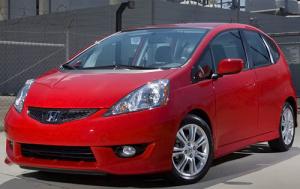
The first-generation were produced for the 2007 and 2008 model years. Models consisted of Base and Sport versions, both equipped with a 109 horsepower, 1.5 liter four-cylinder engine. Fuel economy for the base Fit is an impressive 28 mpg city and 35 mpg on the highway for the manual, and 27 and 35, respectively, for the automatic. Gas mileage for the Sport model comes in at 27 mpg city and 34 mpg highway.
Entering its second-generation for 2009, and produced through the 2014 model year, this Fit was made 4.2 inches longer and also received a suspension update for improved handling. In addition, body rigidity was enhanced for improved crash safety. The extra length was good news for rear passengers who also benefit with rear seats that can now conveniently fold down without removing the headrests. Also added was a telescoping steering wheel and optional navigation and stability control.
Overall Fit Pros: Fuel efficient, agile handling, versatile cabin, surprising passenger room, relatively affordable price.
Overall Fit Cons: Noisy cabin on the highway, lack of power on the base automatic model.
Older Honda Fit Mechanical Problem Watchlist
First Generation Honda Fit (2007–2008):
Transmission Problems: Some early models experienced issues with the automatic transmission, including premature wear, rough shifting, or failure. Honda addressed some of these concerns through recalls or extended warranties for specific transmission components.
Rust Issues: In areas with harsh climates or high humidity, certain Fit models from this era were susceptible to rust, particularly around the rear wheel wells and undercarriage.
Suspension Noises: Some owners reported noises from the suspension system, including squeaks or rattles over bumps. This could sometimes be attributed to worn-out struts or suspension components.
Second Generation Honda Fit (2009–2014):
Vibration or Shaking: Some owners reported issues with vibrations or shaking at certain speeds. This could sometimes be attributed to wheel balance or alignment issues.
Starter Motor Problems: Similar to other Honda models, a few owners experienced issues with starter motor failures or difficulties starting the vehicle.
Air Conditioning Compressor Failures: There were occasional reports of air conditioning compressor failures in certain Fit models from this generation, resulting in the loss of cold air or requiring compressor replacement.
CVT Transmission Concerns: Some Fit models equipped with a continuously variable transmission (CVT) had reported concerns, including jerking or unusual noises. Regular maintenance and fluid changes were recommended to mitigate these issues.
Honda Odyssey: In our opinion, the Odyssey has been the #1 minivan in the marketplace. Its combination of performance, family friendly features, driving dynamics and reliability is a standard bearer in the segment.
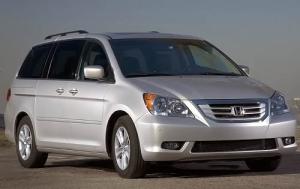
Particularly attractive in the older used market is its third-generation, produced from 2005 through the 2010 model year, and consisting of four trims: LX, EX, EX-L and Touring. There were only minor changes during this production run, including a slight exterior design update and new convenience features in 2008, including a power liftgate becoming standard for the EX-L. In addition, in 2009 integrated Bluetooth became part of the optional navigation system.
The second-generation Odyssey was produced for the 1999 - 2004 model years. Used Honda Odyssey shoppers should note that these models had a four-speed automatic transmission through 2001 (increasing to a five-speed automatic in 2002). It was this Odyssey that added the dual-sliding rear doors (replacing the previous swinging doors), while still featuring the innovative fold-flat third-row seat which debuted in the original Odyssey.
Overall Odyssey Pros: Capable handling for a minivan, top crash test scores, versatile flat-folding rear seat, available eight-passenger models.
Overall Odyssey Cons: Above average interior road and wind noise, not as smooth driving as some rivals.
Older Honda Odyssey Mechanical Problem Watchlist
Second Generation Honda Odyssey (1999–2004):
Transmission Problems: Some models had reported issues with the automatic transmission, including premature wear, rough shifting, or failure. Honda addressed some of these concerns through recalls or extended warranties for specific transmission components.
Sliding Door Mechanism: There were occasional complaints about issues with the sliding door mechanism, including difficulties in opening or closing the doors, sensor problems, or power door failures.

Brake Issues: Certain Odyssey models experienced premature brake wear or issues with brake pads and rotors, requiring more frequent replacements than expected.
Power Steering Problems: Some owners reported power steering fluid leaks or issues with the power steering system that required addressing leaks and repairing or replacing affected components.
Third Generation Honda Odyssey (2005–2010):
Transmission Concerns: Similar to the second generation, some third-generation Odysseys faced transmission issues, such as premature wear, rough shifting, or occasional failure. Honda addressed some of these concerns through recalls or extended warranties for specific transmission components.
Power Steering Hose Leaks: There were occasional reports of power steering hose leaks in certain Odyssey models, which required repairs or replacement of affected components.
Sliding Door Problems: Like the previous generation, some owners experienced issues with the power sliding doors, including sensor malfunctions, difficulties in opening or closing, or power door failures.
Engine Mounts: A few owners reported issues with engine mounts, resulting in increased vibrations or noises. This could require replacements or repairs.
Brake Wear: Certain Odyssey models had reported premature brake wear or issues with brake pads and rotors that needed more frequent replacements than expected.
Air Conditioning Problems: Some users reported issues with the air conditioning system, including compressor failures or leaks, requiring repairs or replacements.
Honda Ridgeline: Introduced in 2006, the Ridgeline pickup made a great deal of headway among those not needing a lot of off-road "rough and tumble" in a truck (which is most of us). The Ridgeline offers the passenger space of an SUV, the usefulness of a truck, a comfortable car-like ride and all-wheel-drive.
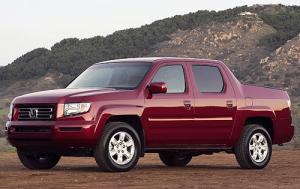
This first-generation Ridgeline was produced through the 2014 model year and featured many unique characteristics not usually found in a pickup. These included a unibody chassis rather than the usual body on frame and rear independent suspension as opposed to the normal solid-axle. In addition, the use of an independent suspension created enough space for adding a trunk, making the Ridgeline the first truck to have one.
Four models were offered: The RT is the basic trim. The RTX adds a different grille, gray alloy wheels, and colored door handles. The RTS is a sportier model with silver alloy wheels, upgraded upholstery, a 6-disc CD changer, a subwoofer and front and rear-zone climate control, while the RTL model comes with leather upholstery, a moonroof, navigation, heated seats and XM radio.
Overall Ridgeline Pros: Fairly nimble handling for a truck, functional interior, versatile cargo storage system, solid safety scores.
Overall Ridgeline Cons: Uncomfortable rear seat, unimpressive gas mileage, limited off-road ability.
Older Honda Ridgeline Mechanical Problem Watchlist
Transmission Issues: Some owners experienced transmission problems, including rough shifting, slipping, or premature wear, particularly in earlier models. Honda addressed some of these concerns through recalls or extended warranties for specific transmission components.
Power Steering Fluid Leaks: There were occasional reports of power steering fluid leaks in certain Ridgeline models. This issue could lead to steering problems and required addressing the leak and repairing or replacing affected components.
Brake Problems: A few owners reported premature brake wear or issues with brake pads and rotors that required more frequent replacements than expected.
HVAC System Problems: Some Ridgeline owners reported issues with the heating, ventilation, and air conditioning (HVAC) system, such as problems with the blower motor or temperature control.
Tailgate Latch Concerns: There were occasional reports of issues with the tailgate latch mechanism, including difficulties with opening, closing, or securing the tailgate properly.
Drivetrain Noise: Certain Ridgeline models had reported drivetrain noise, particularly a humming or whining sound at higher speeds. This could sometimes be attributed to differential or driveline issues.
Honda S2000: The S2000 is all "sports car" to be sure. Actually, having driven several of them, I find them closer to a "race car". This 6-speed is tremendously capable and is a lot of fun for serious driving enthusiasts. Discontinued after 2009, we'll just have to see if they become highly collectable over the years. I'm betting "yes".
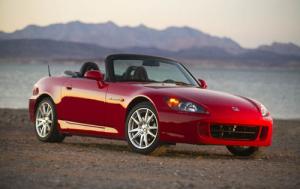
With its debut in 2000, and made through 2009, the Honda S2000's 2.0-liter inline-4 managed to produce more horsepower per liter than any other naturally aspirated engine. Used S2000 shoppers should note that in 2002, the short-throw shifter was smoothed out, the stereo system was upgraded and a glass rear window with a defogger was added.
2002 also saw some minor trim additions, including chrome taillight rings, a new shift knob and some interior silver trim accents. Also introduced in 2002 was the optional aluminum hardtop.
Also of note, for the 2009 model year, the S2000's last, two models were produced: the standard model and the racetrack-performance-oriented CR (Club Racer). Under the hood of both was an athletic 2.2-liter inline-4 with an 8,200-rpm redline paired with a short-throw 6-speed manual transmission.
The standard model came with leather upholstery, lightweight 17-inch wheels, HID headlights, air conditioning, a power-top (with a glass rear window and defroster), keyless entry, stability control and an 8-speaker CD audio system. Some of these can also be found with the optional aluminum hardtop.
The S2000 CR lightened its weight by dropping the air conditioning, the stereo and the power top, and added track-oriented suspension settings, aerodynamic body revisions, a more rigid structure and a lightweight removable hardtop.
Overall S2000 Pros: Dynamic handling abilities, impressive high-rpm power delivery, lots of performance for the dollar.
Overall S2000 Cons: Lacks some modern features, a little short on low-end torque, fairly loud engine at high rpm.
Older Honda S2000 Mechanical Problem Watchlist
Soft Top Mechanism: Some owners reported issues with the convertible soft top mechanism, such as problems with operation, latching, or sealing. Over time, wear and tear could lead to difficulties in opening or closing the top.
Cylinder Head Problems: There were occasional reports of cylinder head issues, particularly related to valve retainers and valve spring retainers failing at high RPMs, potentially leading to engine damage. Honda addressed this concern by issuing a recall to replace affected components.
Suspension Noise: Certain S2000 models had reported issues with suspension components, leading to noises over bumps or rough roads. This could sometimes be attributed to worn-out shocks or bushings.
Oil Consumption: Some owners reported higher-than-expected oil consumption in the early AP1 S2000 models. This could be due to the engine design and high-revving nature of the vehicle. Regular checks and top-ups were necessary for some vehicles.
Transmission Grind: A few owners experienced transmission grinding or notchiness, particularly during aggressive or high-speed shifting. This issue was addressed by Honda through improvements in later models and could also be mitigated by proper gearbox fluid maintenance.
It's crucial to note that the S2000's mechanical issues, as with many other Honda models, were relatively limited compared to many other vehicles, and the majority of owners enjoyed a trouble-free driving experience.
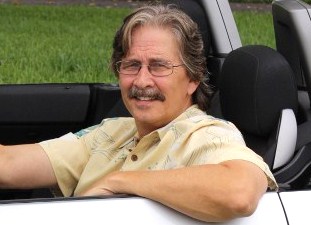 By Josh Rosenberg
By Josh Rosenberg